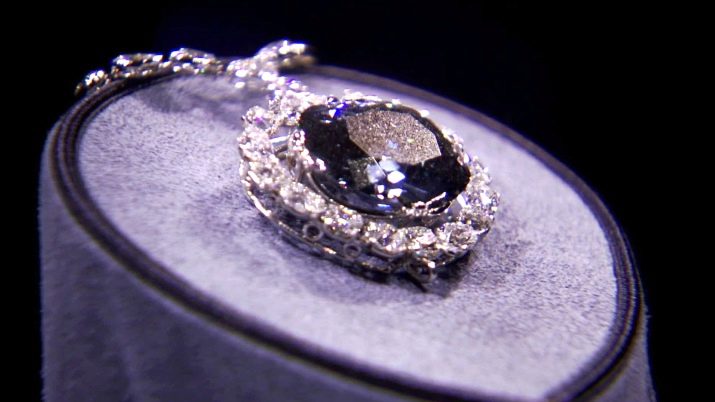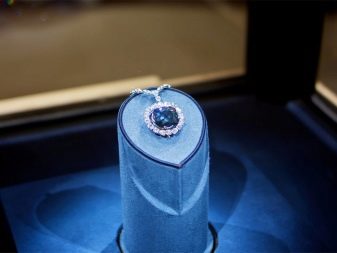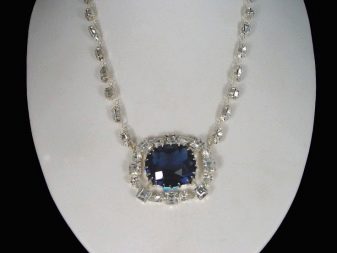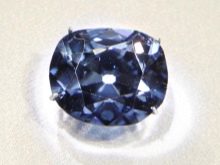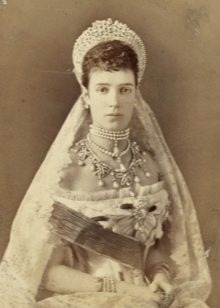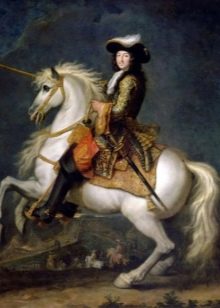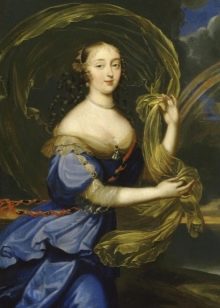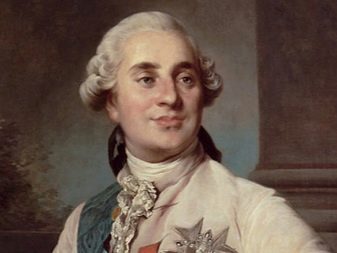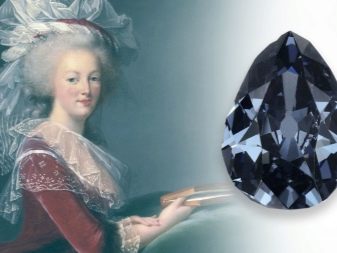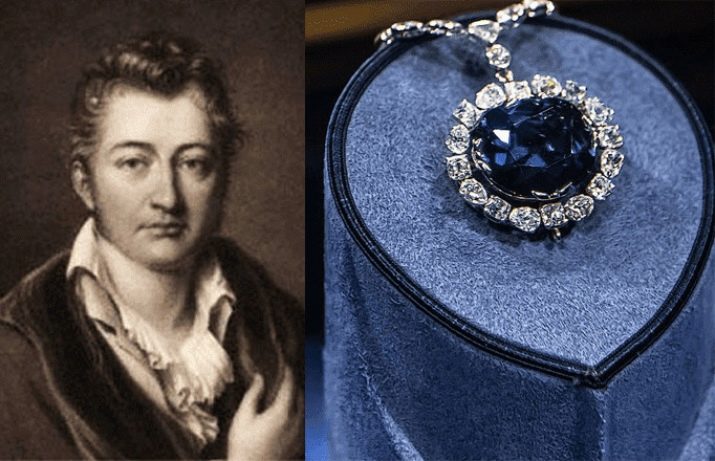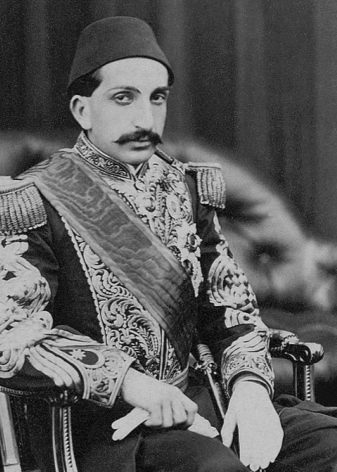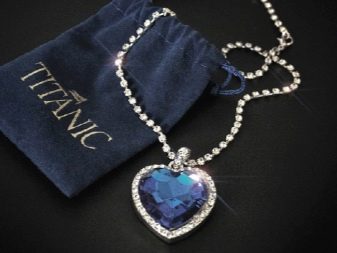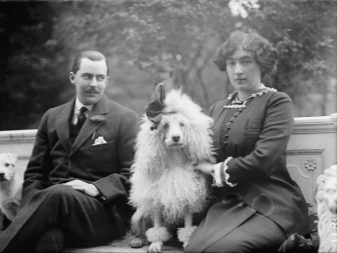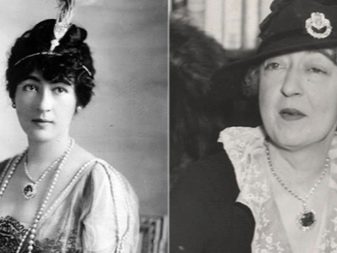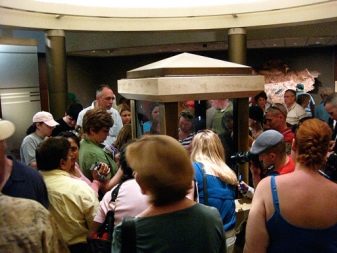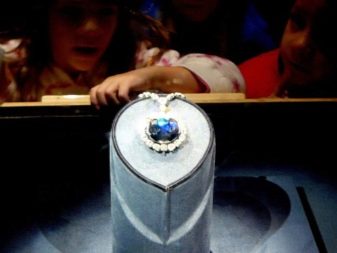Diamonds have always been particularly valuable. With many of them are associated dark and scary stories, generic curses. One of these is Hope's diamond.
Description
At the moment, the Hope’s diamond storage site is the National Museum of Natural History (Smithsonian Institution, Washington, USA). The exhibit is put on public display. It is considered one of the largest and weighs 45.52 carats (9.104 g). Its cut is called “Cushion”. The rounded corners and convex sides visually resemble a pillow, so another name for the cut is “pillow”. The diamond has the following dimensions: length - 25.60 mm, width - 21.78 mm, height - 12 mm.
The special charm and mystery of the stone gives color: deep blue with a grayish tint, appearing on the edges at the time of the light beam passing through them. Bor is present in the composition - it is this element that is responsible for the unique shade. In addition, boron accumulates ultraviolet, so that the stone in the dark emits a reddish glow.
The purity of the diamond was determined in 1988 by experts from the Gemological Institute (USA). The result obtained corresponds to VS1. Existing inclusions and defects are almost imperceptible even with a magnification of 10 times. Now Hope is the centerpiece of a luxury necklace. It is surrounded by 45 colorless diamonds (pear, cushon cut). The second name of the diamond is “Blue Frenchman”.
Story
Hope owes his appearance in Europe to Jean-Baptiste Tavernier, a French merchant specializing in the jewelry business. The main occupation of the merchant was to purchase precious stones in India for the purpose of resale and increase the initial cost many times.
As legend has it, a sapphire-colored diamond served as the decor of the statue of the goddess Sita (Rama's wife). How it came to be in the hands of Tavernier is unknown. It is doubtful that the merchant personally stole him from the temple, but the fact remains. The initial weight of the stone was 23 grams, the shape - triangular. The cut was done roughly, but this did not affect the state of the diamond. Jean-Baptiste called his color "wonderful purple."
Indians believed that an attempt on a statue of a deity would not go unpunished. Anyone who turns out to be the owner of the crystal will inevitably overtake punishment: failures, misfortunes, and even death. But despite this, Tavernier returned to his homeland (albeit, 26 years later), sold the stone to the court jeweler of the then ruling Louis XIV, for which he received the title of nobleman. The merchant spent the last years of his life in Russia, where he was buried. About any tragic moments of his life is not known.
The diamond was quite large, so it was divided into two parts of different sizes. The smaller diamond is currently the property of the Diamond Fund of Russia.
In ancient times, he decorated the ring of Empress Maria Feodorovna. The king of France became the owner of the largest stone. It was he who gave the second name to the luxury crystal - "Blue Frenchman".
The pendant was a favorite decoration of the Bourbons and brought the wrath of the Indian gods to more than this dynasty. The Sun King presented the diamond to his favorite Marquise de Montespan, who had been pleasing him for many years. However, after such a generous gift, Louis XIV suddenly lost interest in his mistress and expelled her, not forgetting to take the diamond. Seven months later, the king fell off a horse while hunting and injured his leg. Began the strongest gangrene, which was the cause of his demise.
At the same time, the series of tragedies did not end: in a year the death killed all the heirs of the throne. Only the grandson was alive, who began to rule France. The diamond was in the royal treasury for many years, since Louis XV was superstitious and was afraid of the curse of the stone. The king decided not to immediately decorate his costume with them. Marquis Du Barry partially echoed the fate of the Marquise de Montespan. Having received a pendant with a diamond from Louis XV as a gift, the mistress quickly fell out of favor. Later, she was accused of commitment to counter-revolutionism and executed.
The family of Louis XVI did not escape the curse of the “Blue Frenchman” either. The life of the royal family interrupted the guillotine. Moreover, Marie Antoinette's girlfriend, who wore a luxurious necklace several times, tragically died at the hands of a raging drunken crowd.
During the Great French Revolution, the treasury of the king was plundered. The “Blue Frenchman” disappeared, and nothing was known about him for almost 30 years.
The fate of the diamond
The second coming of the sinister stone falls on the year 1820. The cut and the weight of the diamond by that time have changed. The owner of the diamond was King George IV. The talent and mind of the monarch as if dissolved in a transparent crystal. According to contemporaries, the changes that have occurred to the personality of the king turned out to be out of the ordinary. Wild orgies and drunkenness became the eternal companions of the ruler. After his death, the jewel was put up for auction, where it was bought by Henry Philippe Hope for £ 18,000 (1839). It was at this time that the diamond received another big name.
Banker Hope was another victim of the ill-fated decoration. The owner died for an unknown reason, and the stone began to move from one heir to another. But he did not bring anything good to them: the son was poisoned, his grandson went bankrupt. After Henrietta, Philip's great-granddaughter, married the Duke of Newcastle-under-Lyme, the diamond began to belong to a new dynasty.
At the beginning of the 20th century, the Hope diamond was in the East. Initially, it was acquired by a collector from Turkey, but he was destined to have such a treasure not for long. The ship got into a strong storm, it was thrown from side to side, like people on board. Fracture of the cervical vertebrae interrupted the life of a collector. At this dark crystal journey in the East does not end. He passes into the hands of Abdul-Hamid II. The Sultan of Turkey gives a blue diamond to his beloved concubine, and after some time she is killed by robbers. The cruel fate befell the very Abdul-Hamid. Deposed from the throne in 1909, he spent the last years of his life in prison.
Last owners
For some time, the owner of the stone was Prince Kandovitsky. The Russian prince presented a blue diamond to his beloved, a well-known dancer, who was distinguished by windiness. The prince, blinded by jealousy, shot his girlfriend, but he also did not escape the curse of the stone. Native dancers avenged her death by hiring a hit man.
By the end of the 20th century, the diamond was again at Hope's. Earl Lincoln, who lived in the United States, was the direct heir of the banker. The stone brought ruin and misery. The wife of the count, unable to bear such a plight, left her husband, preferring the wealthy and wealthy mayor of New York. The critical situation was the reason for selling the jewels.
After that, the owners of the diamond Hope had a lot, but he did not bring happiness to anyone. One of the owners was an elderly couple who died in the crash of the famous “Titanic”.
The modern design has been given to the decoration by the famous jeweler Pierre Cartier. The Frenchman laid out for his purchase a fabulous sum - 550 thousand francs. But Cartier did not stop there: a new cut (cushion), a frame of 16 white diamonds. Thus, an expensive and luxurious necklace was born.
Researchers believe that the Hope family created a halo of sinister mystery around the stone. After all, it directly influenced its value. Collectors possessed large sums and without hesitation gave them up at auctions for a blue diamond, on which lay the curse of the Indian gods. Pierre Cartier took into account all this. Being a successful businessman, he decided to sell the necklace.
The jeweler skillfully fueled interest in the decoration, using the mysterious and tragic stories associated with the "Blue Frenchman." As a result, Evelyn Macklin becomes the new owner. She was both terrified and reverent at the diamond. The grim stories of the previous owners pushed her to cover the purchase in the church, but this attempt did not bring results. Eyewitnesses claimed that the love for the necklace was obsessive: Evelyn did not part with the diamond. Next in the family there is a series of tragic events: against the background of alcohol dependence, Evelyn’s husband ends up in a clinic for the mentally ill, her son dies under the wheels of a car, her daughter commits suicide.
After death, Macklin bequeathed the crystal to her grandchildren. They did not tempt fate and sold the inheritance to the jeweler Harry Winston, thereby extinguishing the debts of their grandmother. A pragmatist by nature, the jeweler did not attach importance to the sinister historical side of the phenomenon, although he had heard about the tragic fate that befell all owners of the stone. He was probably the only and last owner who was not affected by the "Blue Frenchman". Winston arranged various charity events and evenings where he showed the Hope diamond.
In 1958, Harry Winston sold the necklace to the Smithsonian Institution, where it remains to this day. The price for the luxury exhibit was purely symbolic - $ 146. The decoration was mailed in rough wrapping paper.
According to experts, the cost of a blue crystal is now $ 100 million. Anyone can see it. The necklace is protected from intruders by bullet-proof glass.
See Hope's diamond in the next video.

